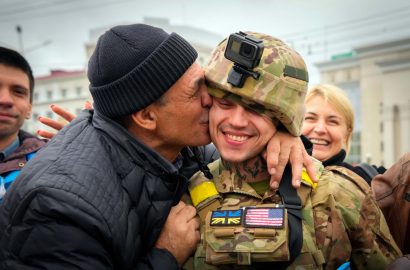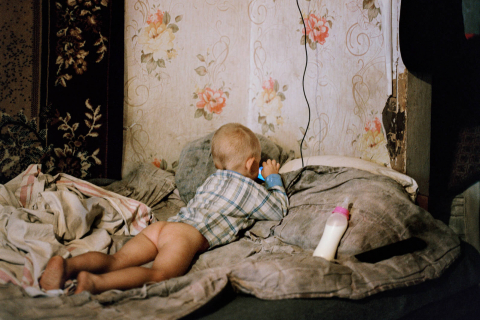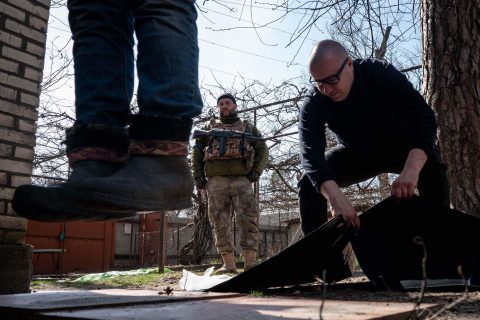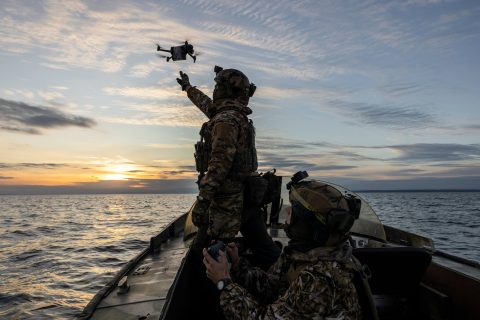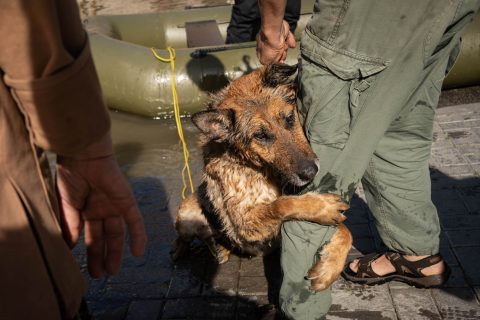
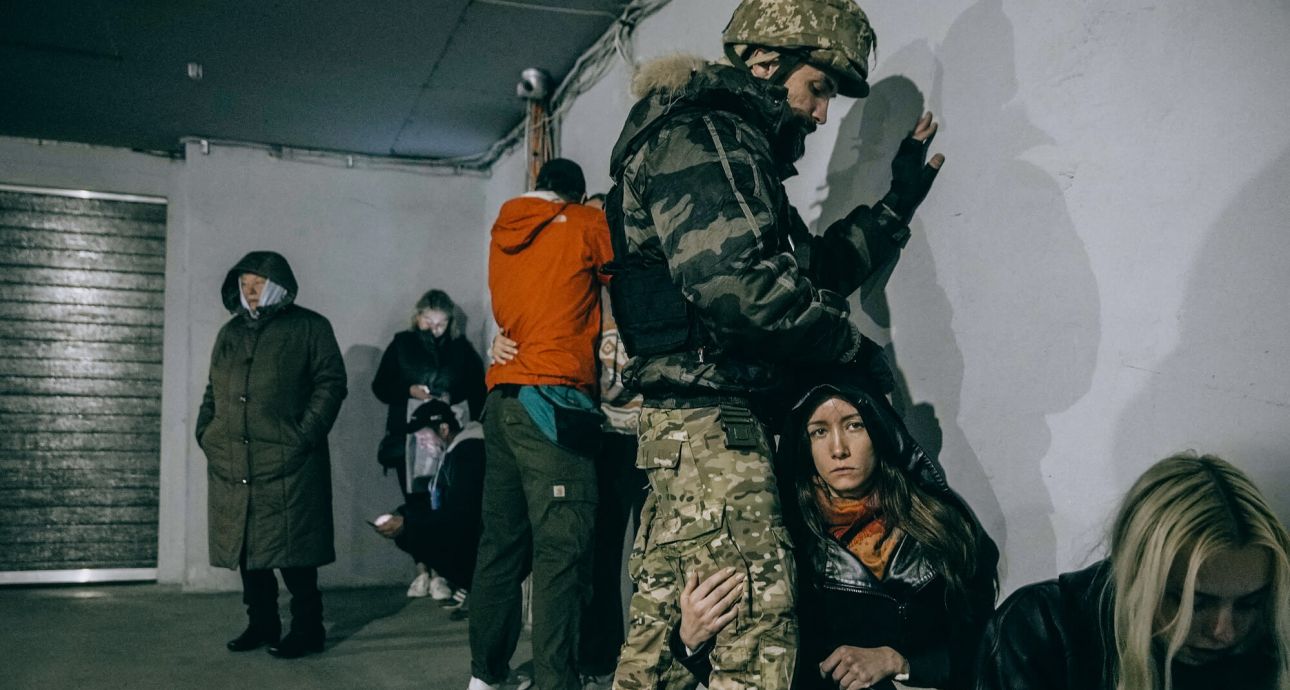
Ten Iconic Photos from the War by Julia Kochetova
Ukrainian photographer Julia Kochetova started capturing the Russian-Ukrainian war back in 2014, right from its beginning. After the full-scale invasion, she collaborates with numerous international media outlets such as Der Spiegel, Vice News, Bloomberg, The Guardian, Reuters, and actively documents events in Ukraine. For Julia, it is crucial to show that all these tragic and heroic stories from the news are always deeply personal, and behind the statistics lie human losses and hopes.
Stabilization point near Bakhmut and Denys, who survived
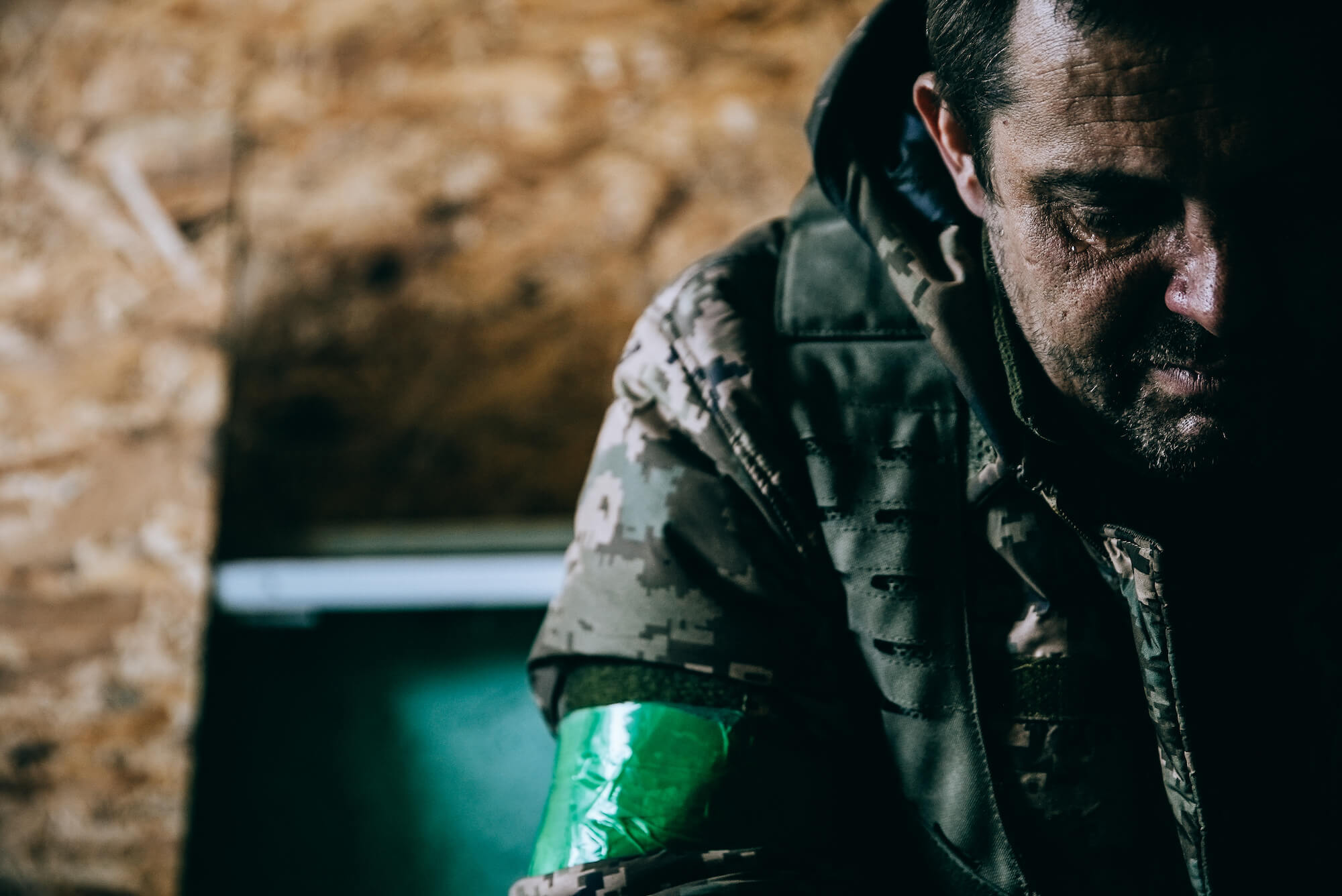
Talking with the wounded is always on the edge: “ask questions” and “shut up and find a cigarette for the person in front of you.” He and three brothers-in-arms with concussions are waiting to be evacuated to the hospital. In the news, there’s primitive propaganda about the “Bakhmut fortress,” and next to me is a man who couldn’t take out the body of his commander.
He started to cry, and I was very afraid to pick up the camera.
Stabilization point of the 93rd brigade in Bakhmut, now in ruins
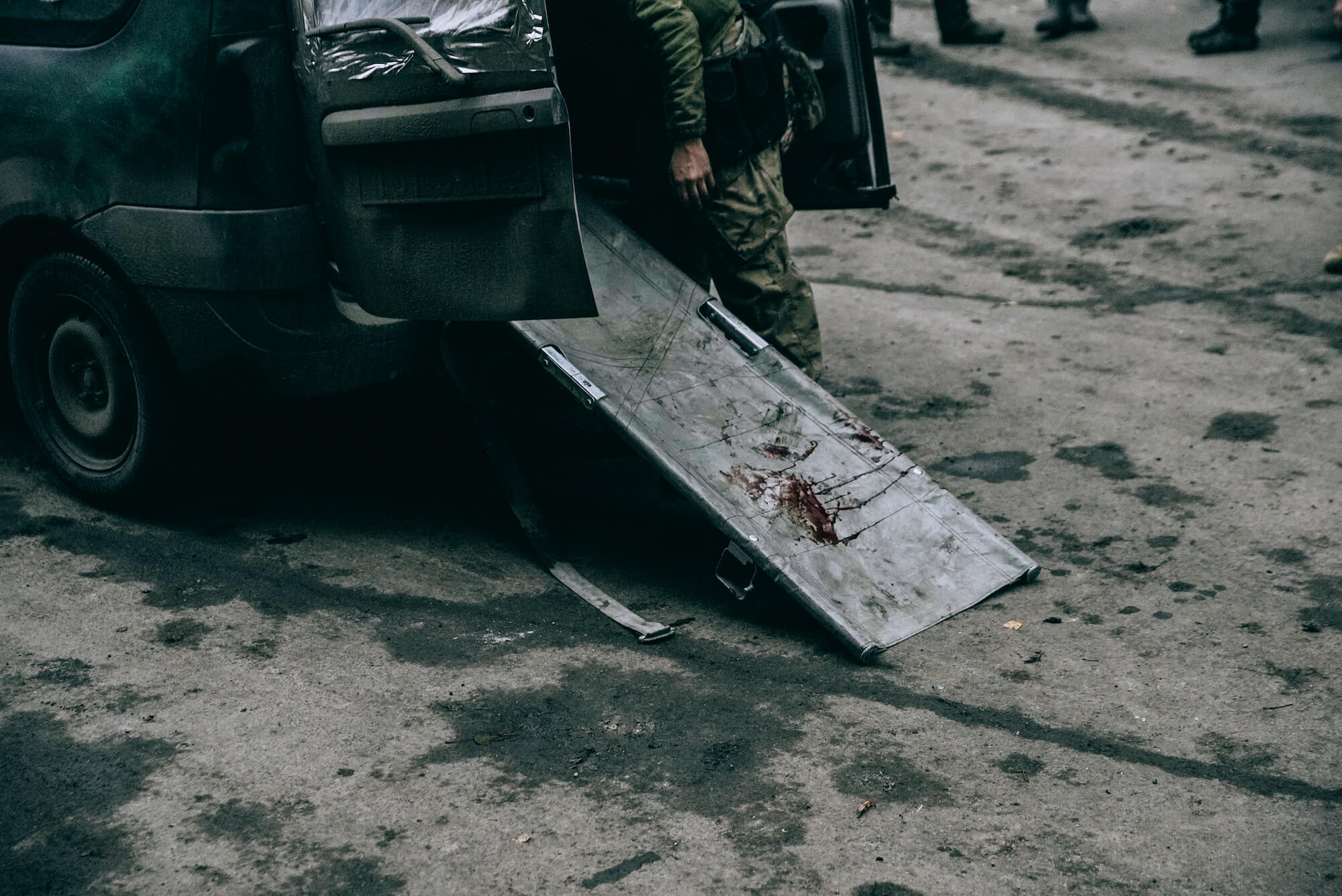
“Alive, stable, on the bus, evacuation!” He is breathing hard under the golden thermal blanket. Slow, heavy, but breathing. This is definitely not a place for prayers, patients are changing so quickly on the operating table. On the edge with death, you feel life so precisely.
Doc laughs and hugs me tightly: “I’ll see you soon, for sure.” I laugh – we have an invisible bond: his rotation here began exactly on my birthday. He operates so skillfully that birthdays are celebrated here every day.
The city lives as long as you fight for this, Doc. Shells are exploding somewhere, you are still fighting.
Liberated Kharkiv region
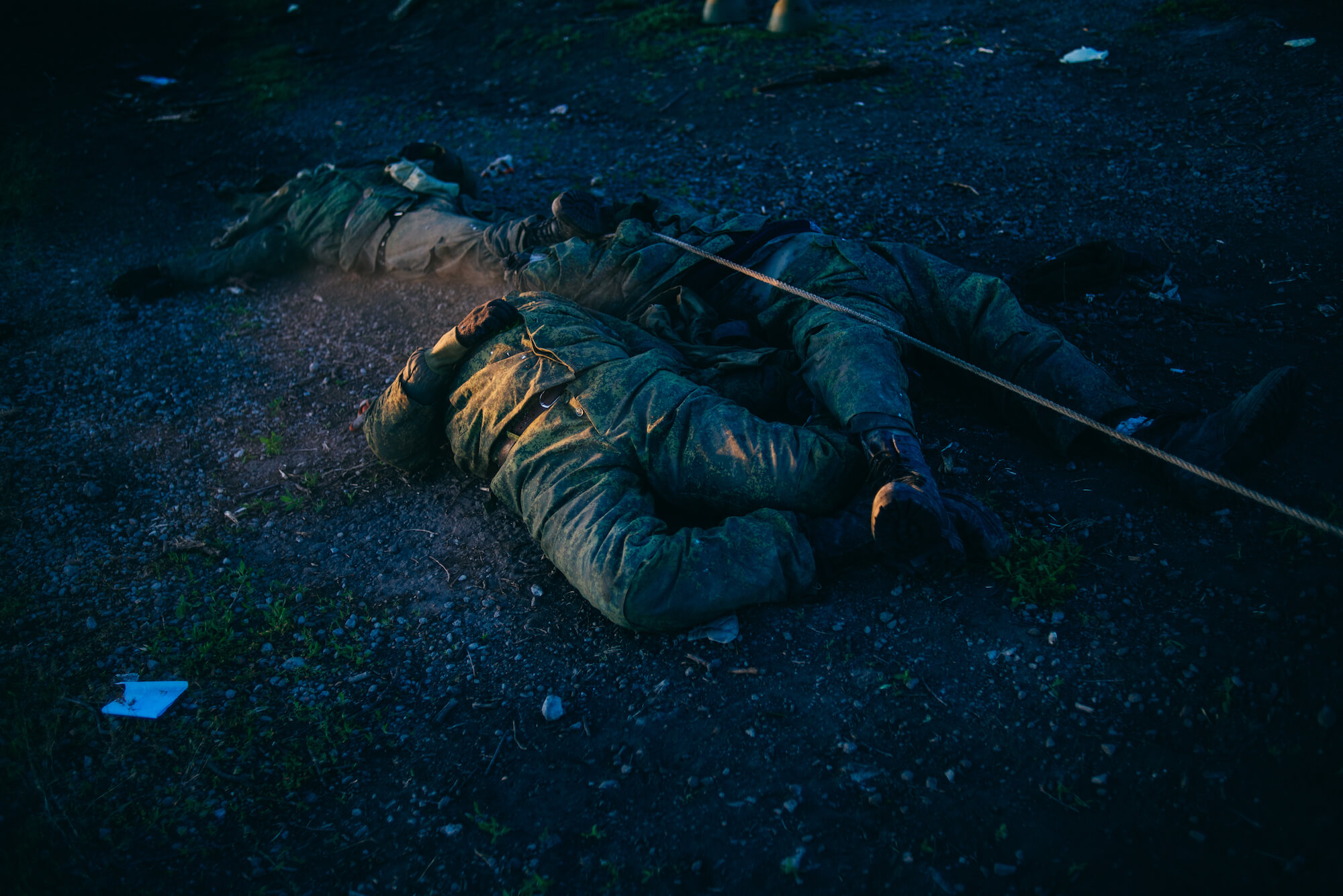
A dozen Russian soldiers in the pit. Аgain this smell settles in the lungs and somewhere deep in the heart. I think that death is equally terrible for everyone. But there is death for invaders, and there is death for defenders – this thought keeps my hands straight and does not allow me to turn around and run away. in fact, I have nowhere to go – this is my land.
I skip the funerals of my fallen friends and colleagues, but I watch dead Russian soldiers falling into white body bags.
Mortar crew of Belarusian fighters “Volat”, suburbs of Bakhmut
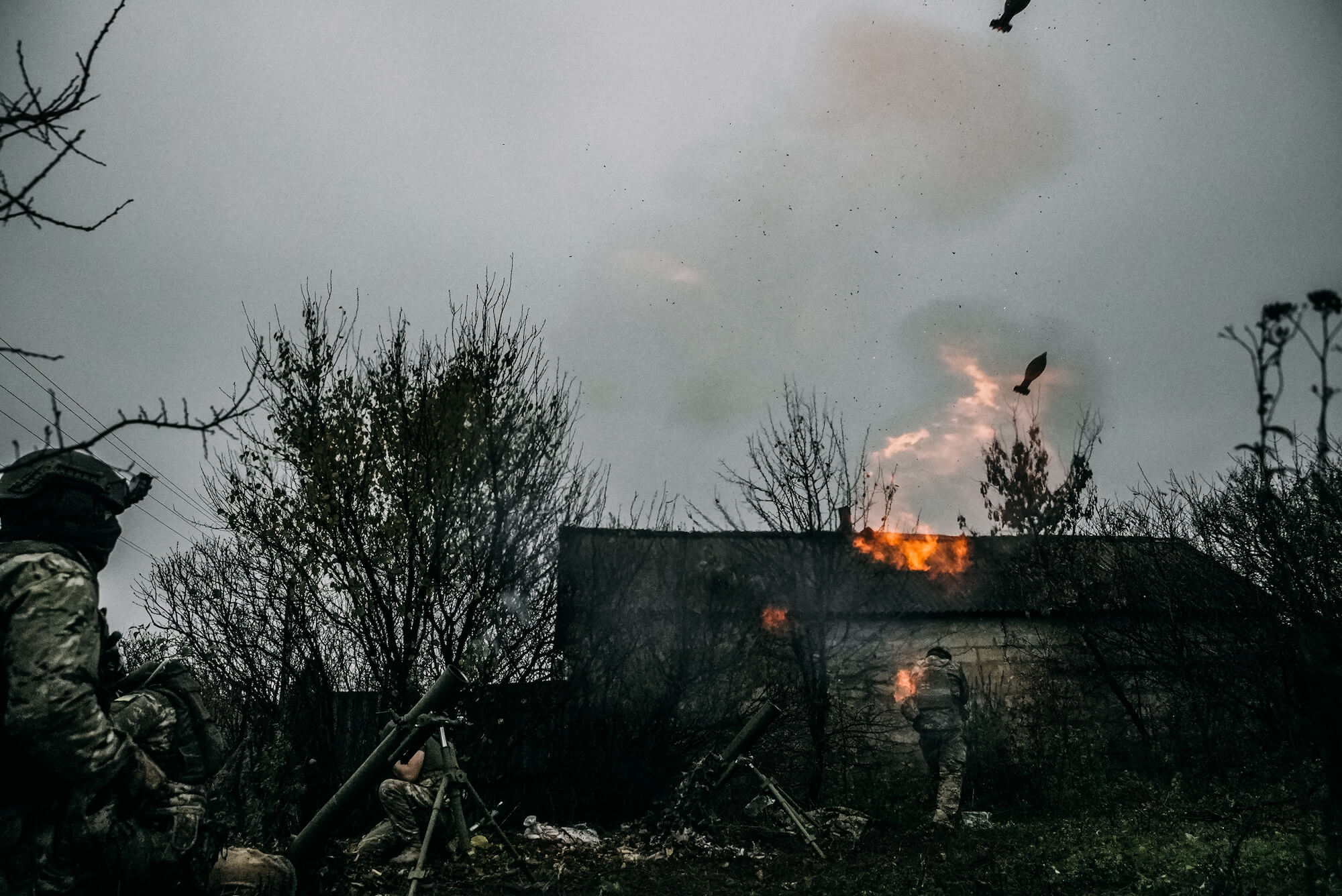
“By liberating Ukraine, we’ll liberate Belarus,” Yan, the commander of the unit, was planning to come to Maidan for a week in 2014 – just to have a look at the revolution. Instead of a short trip, he’s been living here for 8 years and fighting for the second time. We laugh – we have a lot of common friends and comrades. Alive ones and dead. Before, Yan almost prayed to “die in battle”, it’s considered a real honor for a warrior. But now he just wants victory and a family. “I hope all these previous requests and my prayers will not work.”
Between the shot and restless sleep – small cigarette lights, white rockets splashes in the sky, and mines. We laugh as if no one will ever die, but in the morning a Russian landmine arrives. Then two more.
Checkpoint near Irpin
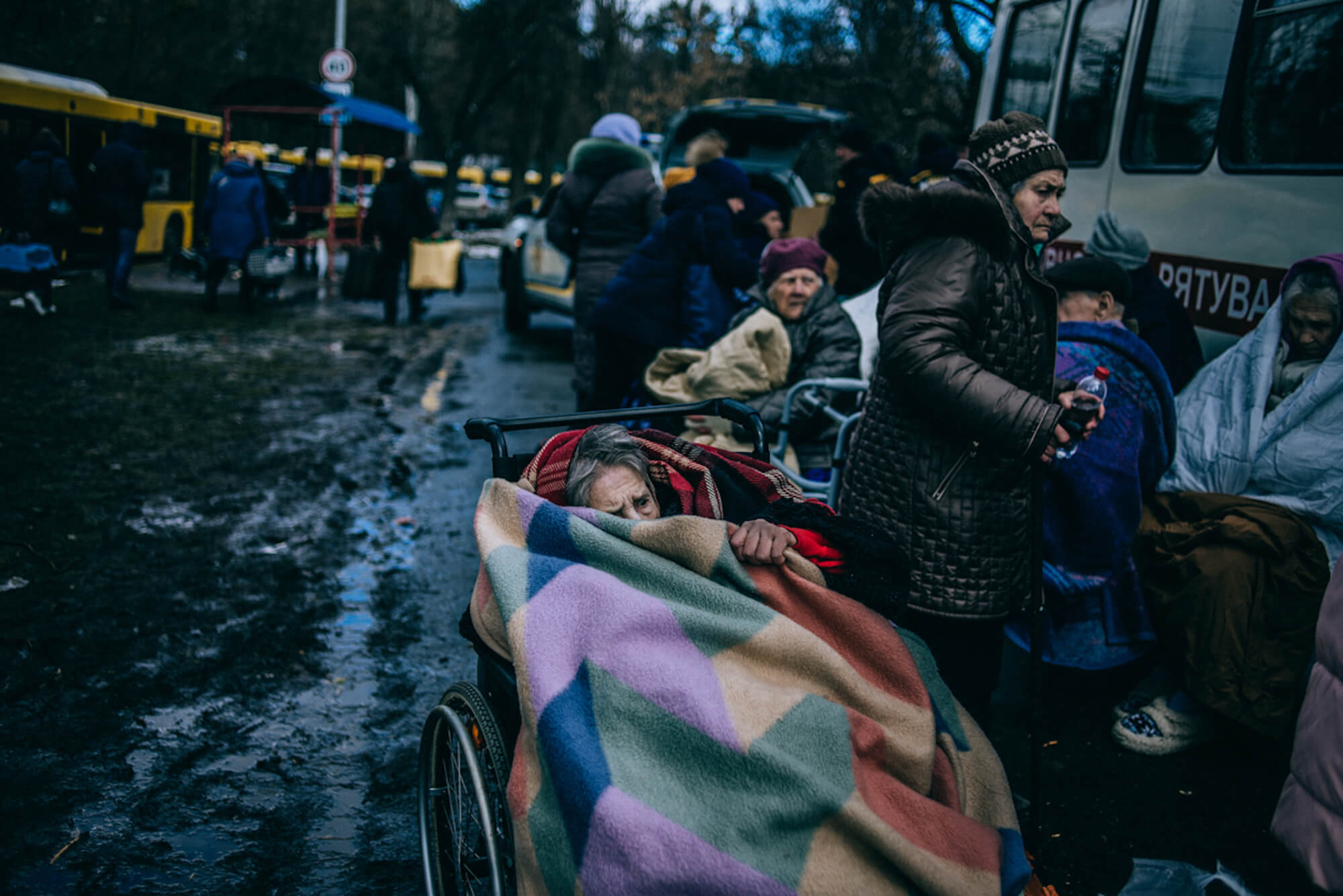
We’ve failed as humanity. I’ve witnessed locals evacuating from Irpin in the Kyiv region. More than 3000 people were evacuated today. For the last 5 days, they were cut from the electricity, gas, water supply, and mobile connection. 12 days in the shelters. Some kids got out from underground only today. They’re getting out of the evacuation bus, it’s still shelling around. They say: “I can’t comment cause I’m shaking right now”. And the old woman just stuck on the crossroad. The other one is trying to get warm or to hide under the blanket.
I think that my camera is superfluous. This woman is needed to be warmed.
The first Shahed drones attack, near my appartment
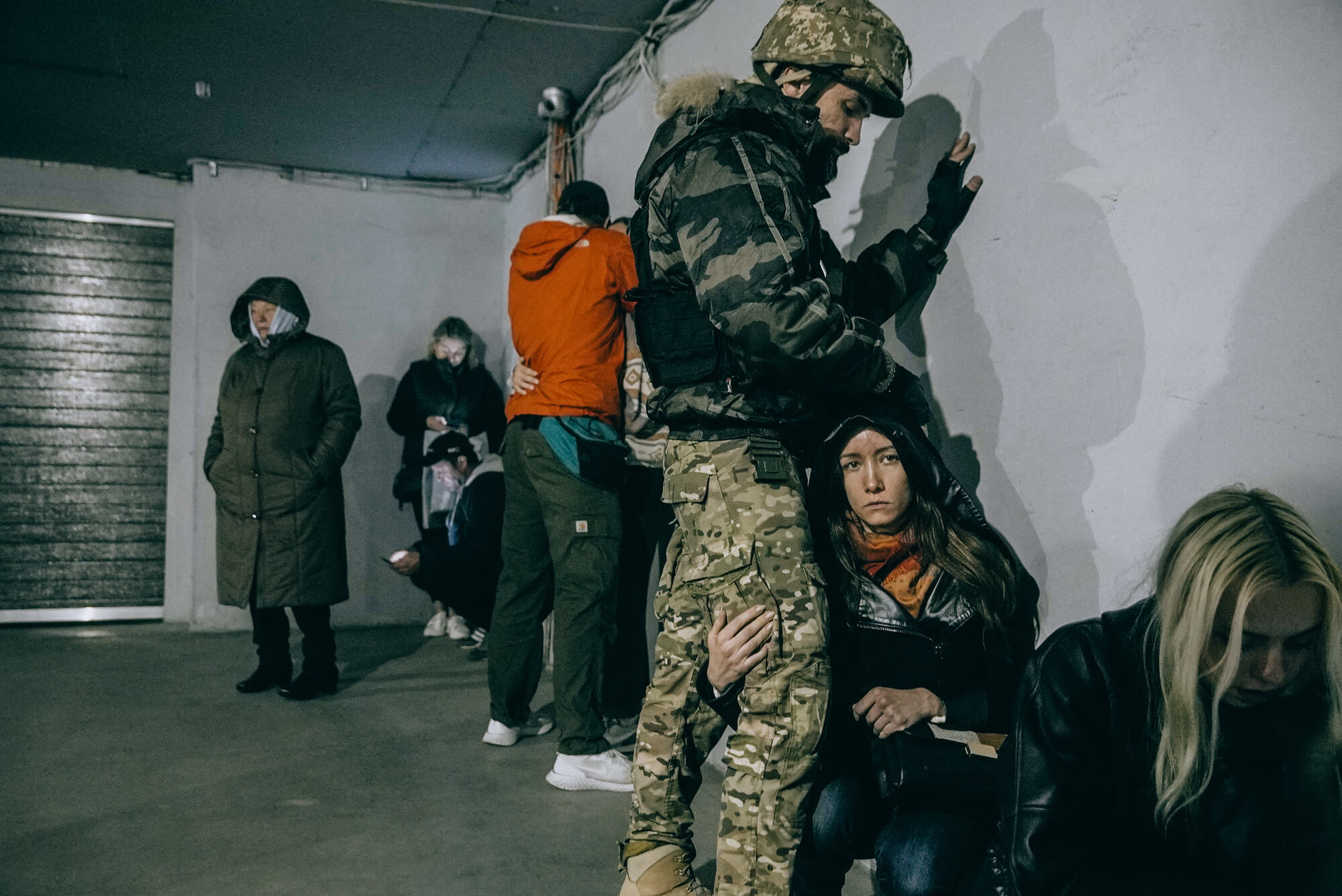
We wake up because of explosions. How gross to walk down your street wearing a bulletproof vest. The area is surrounded by restriction stripes. I turn into the yard – it’s good to know short cuts, because this is my district. It’s bad to recognize the body by birthmarks and tattoos that you remember so well.
Underground parking is a shitty shelter, but there is nothing to choose. As long as we hug like that in shelters, we cannot be defeated.
Night at Bakhmut suburbs
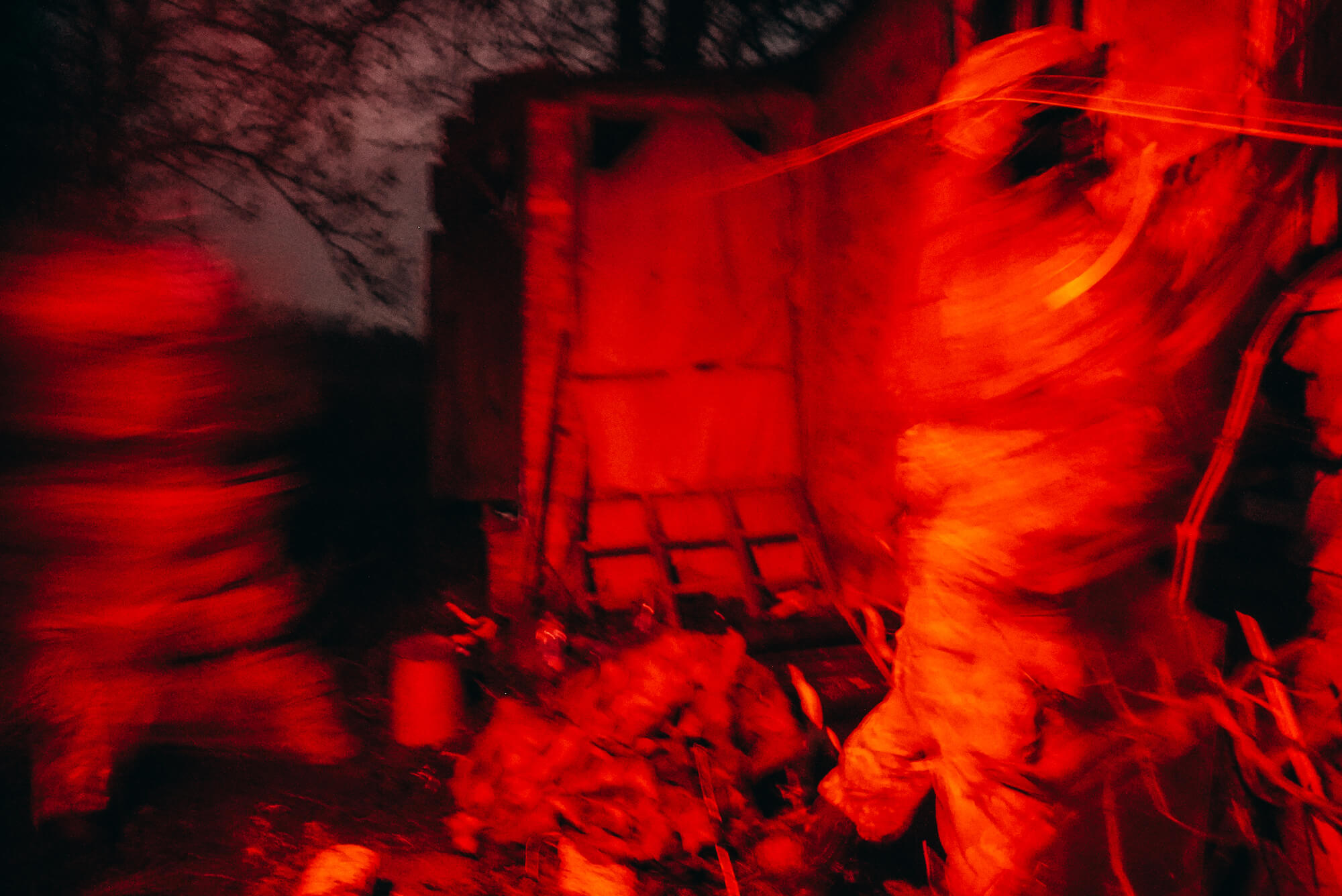
The war is blurred. Shaky. Analogue. There are such photo files – raw, without processing or retouching. There should be a warning – these photos can hurt. Should we put this inscription on all wars? The war is blurred, during the explosion you don’t really understand what is around you.”Out of focus” — that’s how the eyes look like, when there are fewer and fewer of us left. Mortars are working, then mines will start flying in response. “Look, we are correcting from the drone, we see them, here — four fuzzy dots. Now we will heavily fire them with the artillery, woohoo!”
I now think that we are the same fuzzy dots. Sometimes, we merge into one.
Kherson, a week after the liberation, a killed woman in the yard
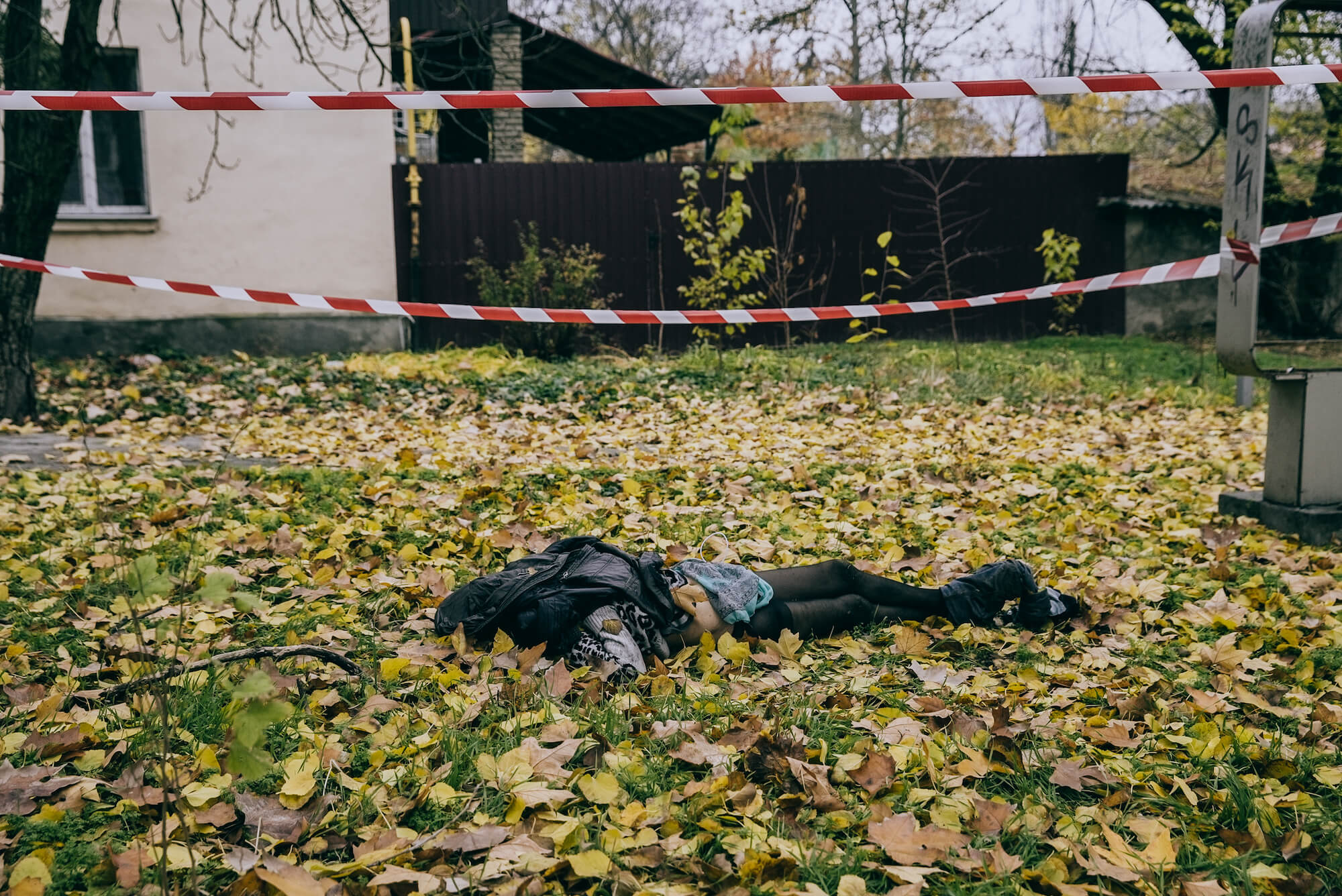
Kherson was occupied for eight months. Thousands of people were kidnapped by the Russians and tortured. A couple makes a video call near a Soviet tank with the inscription “Kherson is Ukraine”. “Mommy, don’t cry,” – I hear a second of someone’s life and feel like I’m going to cry instead of them. A dozen people contact their relatives and say, “I’m here, I survived.”
It feels like being in a surgery room, where some survived, and some did not. After the day of liberation and the Ukrainian flags, stories of pain come out.
– There is a woman’s body in the yard.
– Are there signs of violent death?
– I don’t know.
How can something bloom near the place of execution?
Kherson, a torture chamber
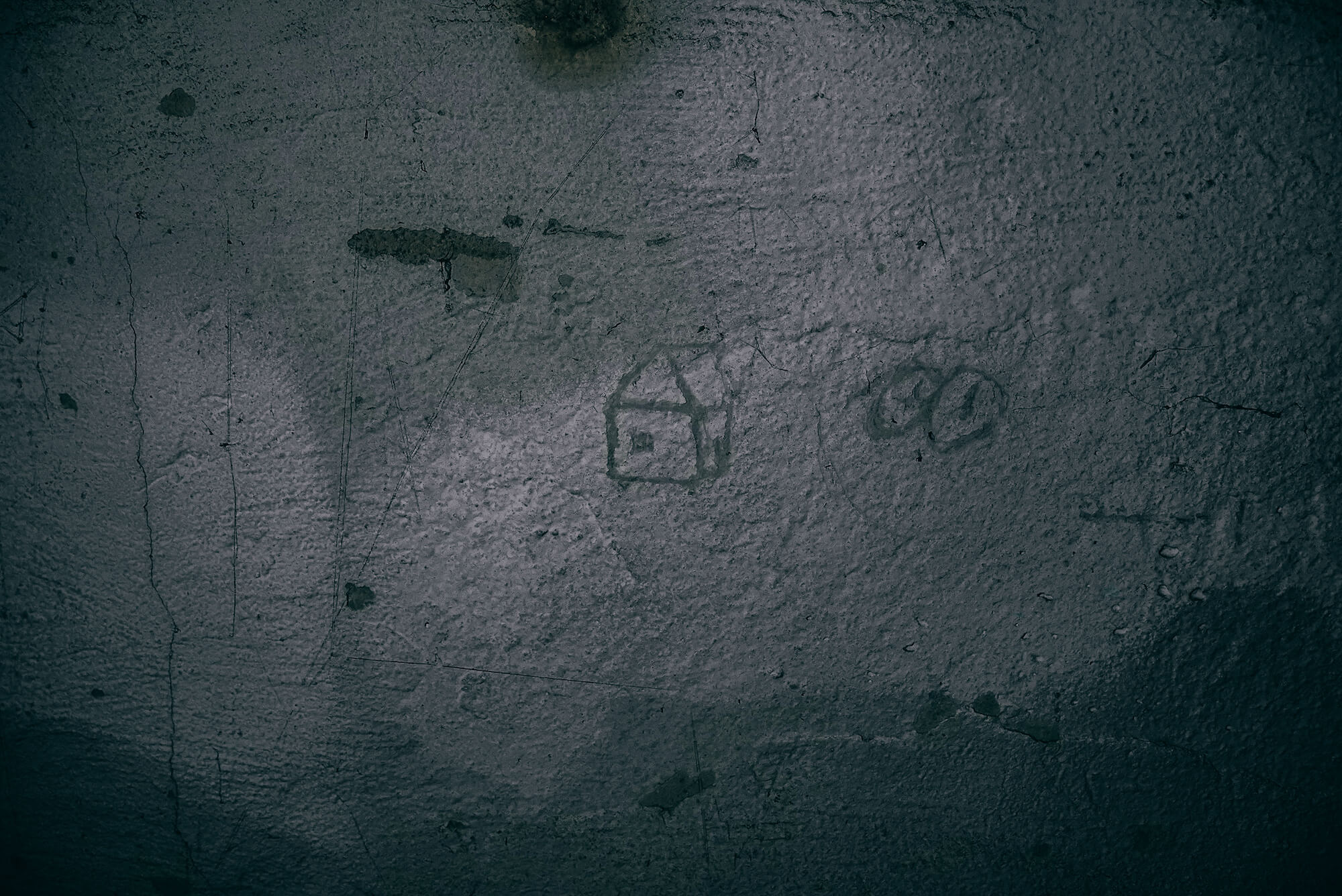
Everything is covered with black fungus, it hangs from the ceiling. There are inscriptions on the walls: “God, give me strength.” “God”. Serifs – days of captivity. And a drawing of a tiny house. In the middle of stench, fungus, urine, and death – this tiny house.
A row of bottles with urine mixed with blood. Flowers on the chair’s upholstery – how can I still see flowers here?
I can’t breathe, I need to get upstairs. On the street, it feels like everything is also covered with fungus. The upper floors are being demined, there’s an explosion. A bag on the head, a current on the little finger, an explosion. And the tiny house, my god.
A self-portrait
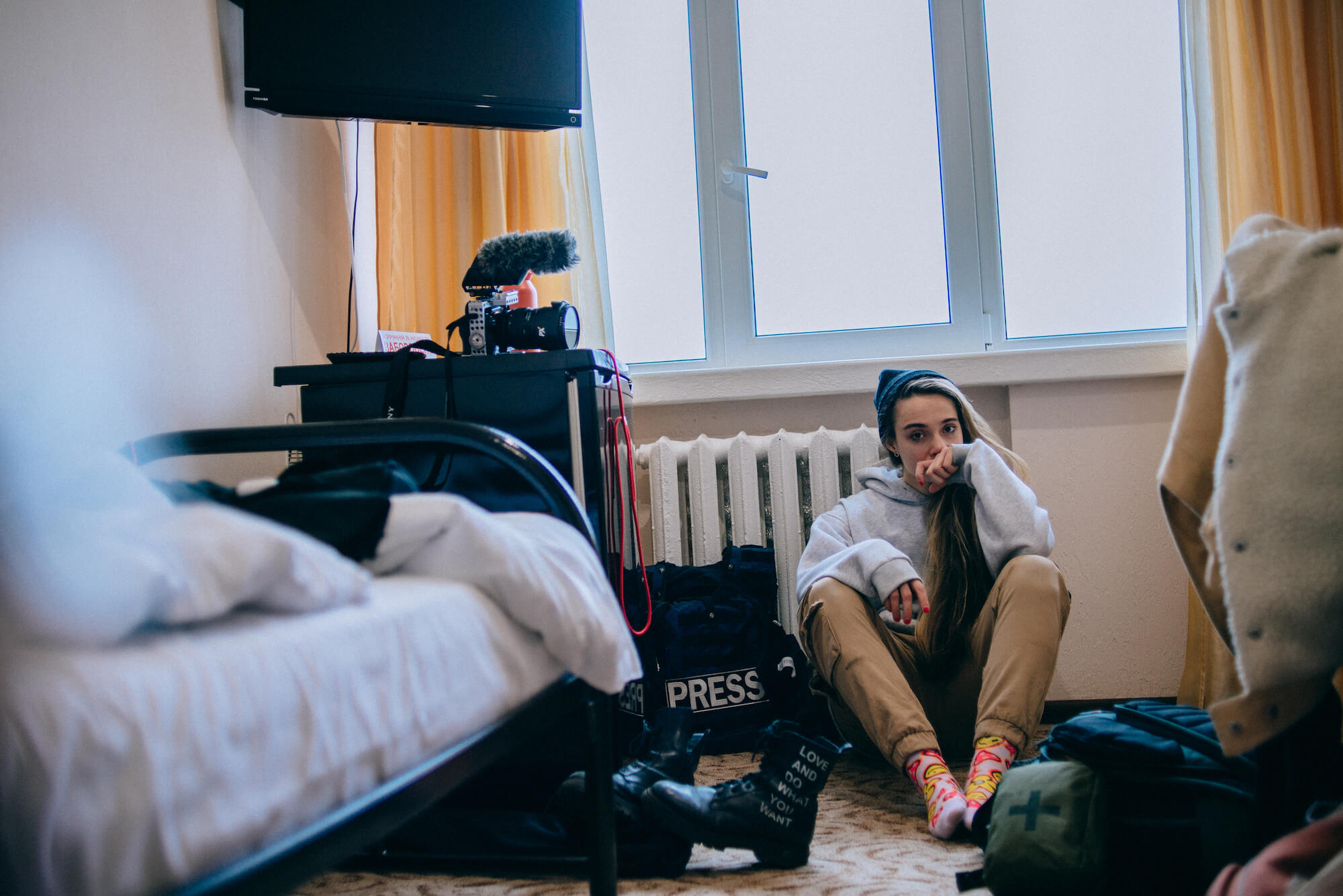
A self-portrait is a very apt and painful form for reflection. I am here, on the 10th floor of the “Kramatorsk” hotel, on February 25, 2022 – before the loss of friends, before the line of closed coffins, before the shelling of my parents’ house, before love, and before thousands of anxieties.
My job is to show that war is personal. That it has a name, a family, a concrete pain, and a concrete tear on the cheek. Not a number, not “suffered losses”, not “was destroyed”.
War is very personal and already – war is very much about me.
This publication was created with the financial support of the European Union. The content of the publication is the sole responsibility of DW Akademie / MediaFit Program for Southern and Eastern Ukraine and does not necessarily reflect the views of the European Union.
Others project materials

New and best

